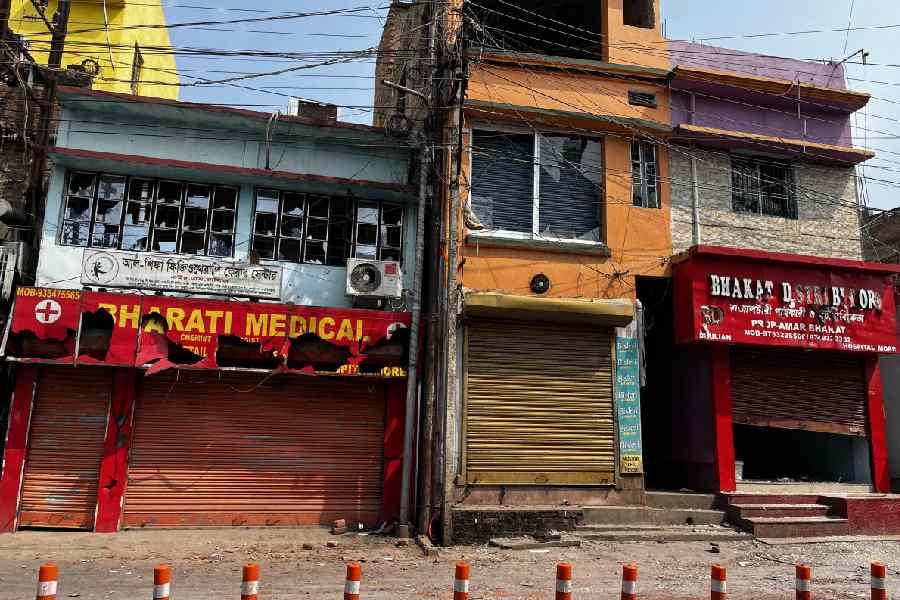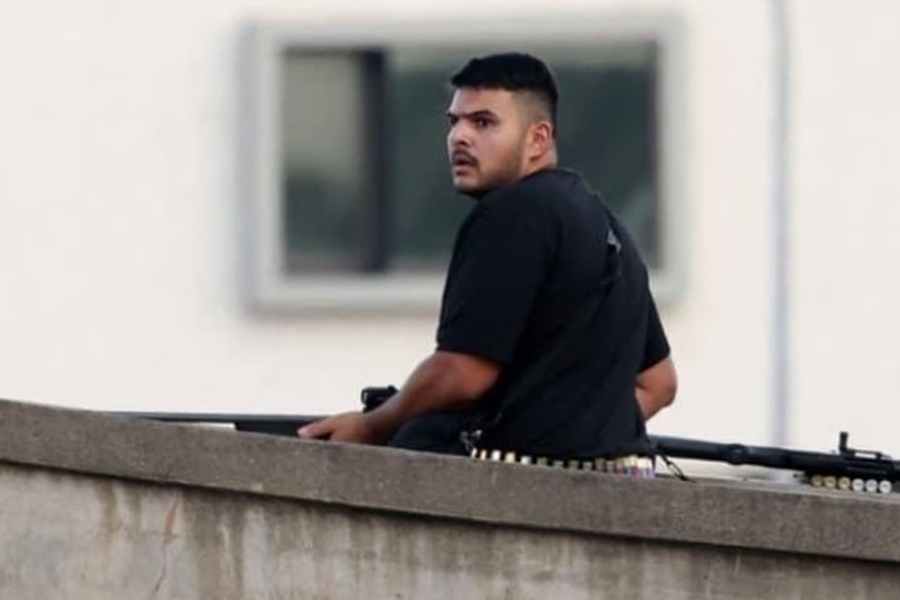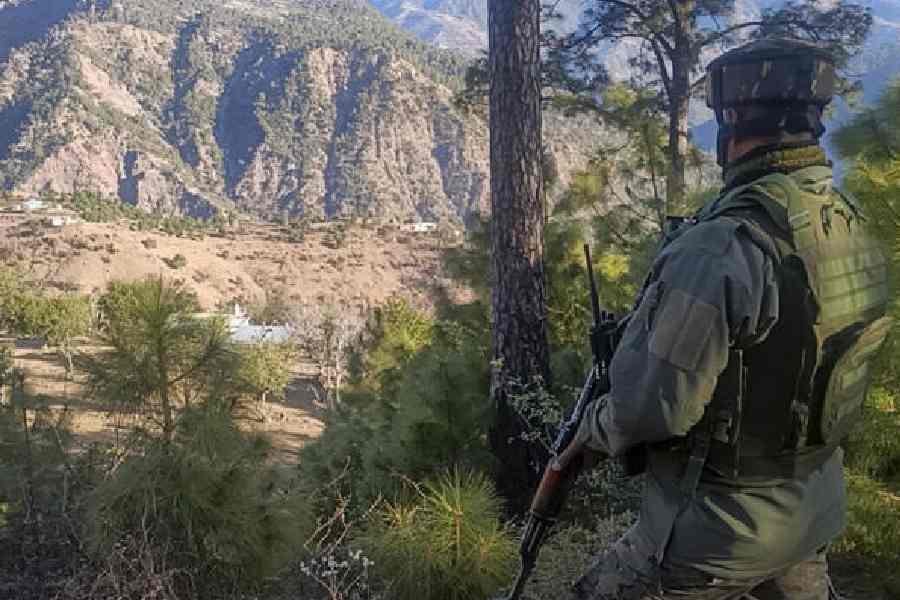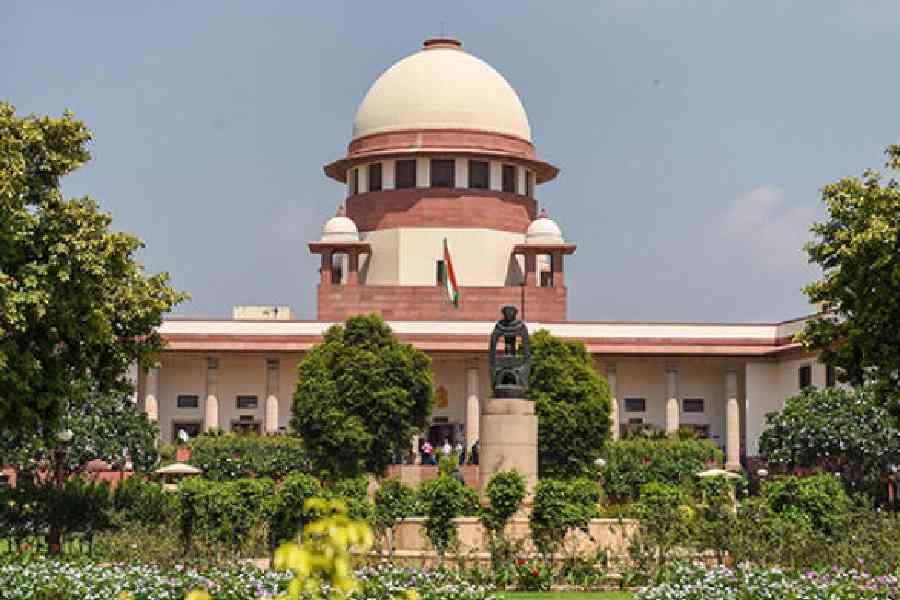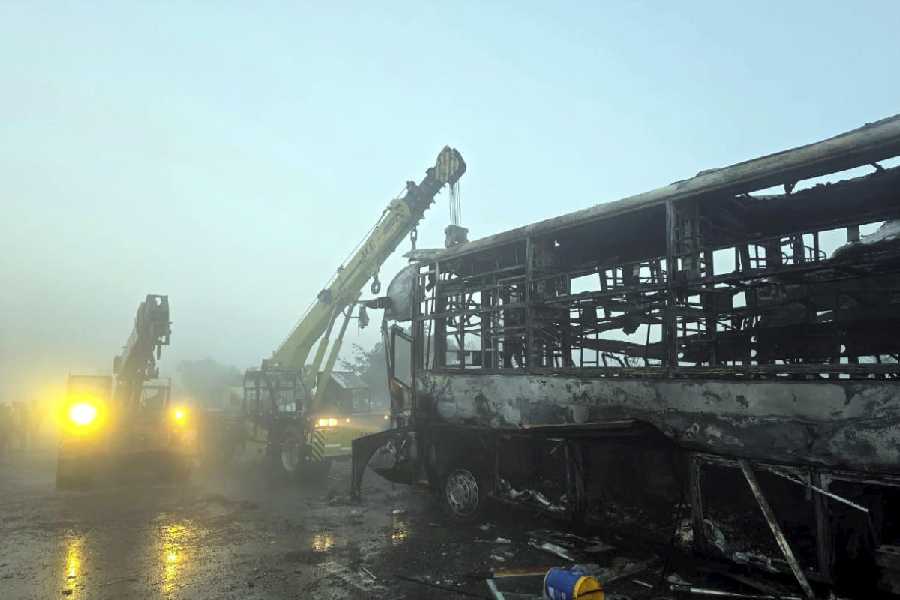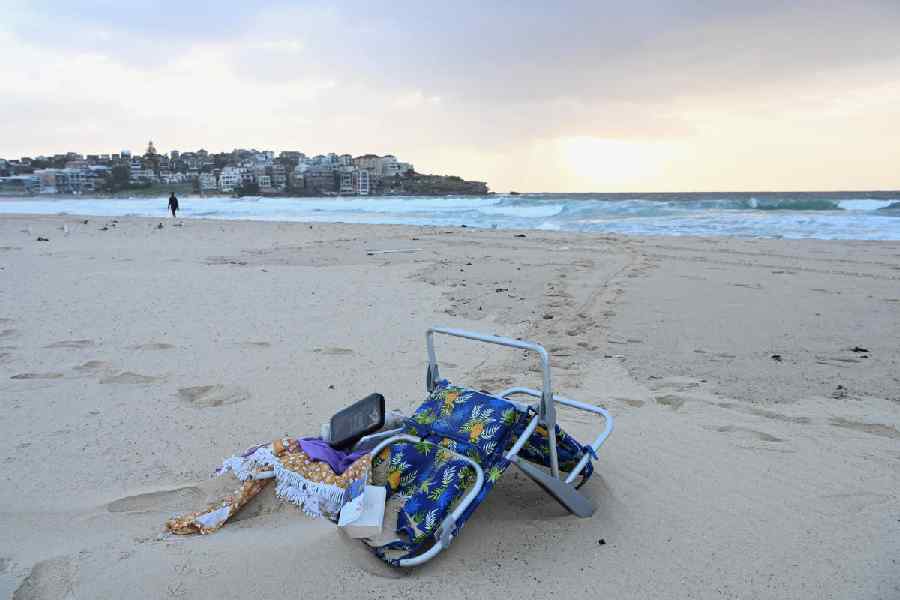A tractor and a group of sweepers were deployed on Sunday to erase all the visible signs of violence, from burnt furniture to broken glass and bricks, from the roads of Samserganj, the epicentre of the Murshidabad violence that has claimed three lives.
The junior police officer overseeing the clean-up was heard instructing a sweeper not to leave anything behind on the road, not even the burnt fragment of a motorbike tyre.
A senior officer said that removing the signs of violence was part of the process of restoring normality, since the sight of them could provoke fresh unrest.
However, the clean-up could not assuage the pain of 65-year-old grocer Ratan Ghosh, a victim of violence that stemmed from a rally held to demand the revocation of the newly enacted Waqf Amendment Act.
“Had the police been there, I could have saved my small grocery store, my only source of income,” Ghosh said, breaking down as he pointed to his looted and vandalised shop in Ghoshpara.
Samserganj police station, swarming with uniformed police and BSF personnel on Sunday, is barely 350 metres from Ghosh’s shop.
Ghosh and at least a dozen other victims of Friday’s violence said the police had remained inactive through the three hours of looting and physical attacks.
“We had kept ₹1.5 lakh in the shop to pay the wholesaler. The goons took it away. Who will give us justice?” Ghosh’s wife Chanchala asked.
“We won’t clean our shop or home until the perpetrators are punished,” Ghosh said.
Many people have fled the area, suddenly overwhelmed by a feeling of insecurity at a place where they had lived for years.
Residents alleged there was no police arrangement to control the crowd, and whatever personnel were present at Samserganj police station on Friday “lacked the courage” to stand up to the hundreds of vandals.
People from both communities agreed that a complete collapse of law enforcement had fed the bloodshed and the chaos, as the initial vandalism turned into a clash between communities.
Ismail Hossain Ansari said his 13-year-old son had to hide inside a sweet shop for five hours as the police played truant. The boy, unable to escape quickly even after the shop was set on fire, suffered partial burns.
Ismail said his son and a cousin, both around the same age, and two workers had locked themselves inside toescape the mob.
“I couldn’t go there because mobs were setting fire to shops. One such incident happened right in front of a local police officer, who didn’t even try to stop it,” Ismail said.
“When I realised it was too dangerous for them to stay inside, I climbed the wall with two relatives and rescued them.”
The protest had begun at the Notun Dakbungalow junction on NH12 and spread to various wards of the Trinamool-run Dhuliyan Municipality.
A source said the local administration had started a survey to assess the number of people affected, especially those who had lost property. Residents claimed at least 60 homes had been torched and over 150 shops and houses vandalised.
Multiple Trinamool leaders acknowledged a failure of the police intelligence to anticipate such a large protest.
“This failure affected not just the common people but also police officers. The SDPO was injured and a traffic outpost in Samserganj was burnt down,” a local Trinamool leader said.
He said the home of Farakka MLA Manirul Islam had come under attack.
“We had no information about this massive assembly,” said Jangipur MP Khalilur Rahman, who suspects that many of the rioters were outsiders.
“Gathering intelligence was the police’s job, and they can comment about this. But I can say that the police did take steps to restore peace after the incident.”
Rahman added: “Samserganj is a peaceful area where both communities have coexisted for years. Many told us they saw unfamiliar faces in the crowd. I’ve asked the police to identify the culprits.”
Although police and BSF reinforcements arrived in large numbers after Friday’s violence, the situation stayed out of control till Saturday night, a source said.
DGP Rajeev Kumar arrived in Samserganj on Saturday night and held several meetings. Dozens of senior police officers, many with prior experience in Murshidabad, have been deployed.
On Sunday, Kumar told journalists: “The situation is fully under control.”
A source said that apart from the BSF, 17 companies of other central paramilitary forces had been stationed in different parts of the district. Calcutta High Court had on Saturday ordered the deployment of central forces in troubled areas.
Still, questions remain about the police’s failure in Samserganj and Suti, another site of violence.
A source referred to a major protest at Omarpur in Raghunathganj, where two police vehicles were torched on Thursday. “Even after that, no concrete action was taken. The police should have realised that the protests wouldn’t remain localised and deployed forces accordingly,” the source said.
Samserganj had witnessed communal violence also during the anti-NRC protests of 2019-2020.
“Had we studied past records properly, we could have taken precautionary measures,” a police officer said.
However, MP Khalilur Rahman and local MLA Amirul Islam claimed that police reinforcements had been delayed on Friday by a blockade at Sajur More in Suti, around 9km away.
“The police couldn’t arrive in time because of the blockade. Later, a large contingent arrived from Malda but it was a bit late,” MLA Amirul Islam said.

